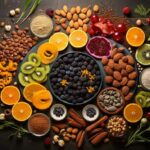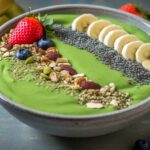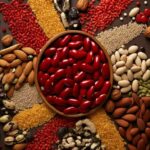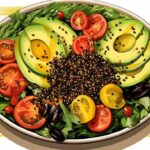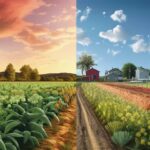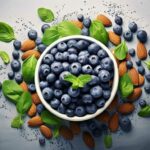Commercial Production of Chia Seeds
Six Profitable Practices for Chia Seeds Cultivation

Are you looking to improve your chia seeds farming methods? Look no further! Our expert advice on six profitable techniques covers all the essentials you need.
From optimizing growing conditions to implementing efficient irrigation techniques, we’ll guide you every step of the way. Our precise and technical tips will help you achieve maximum yields and minimize losses.
Get ready to revolutionize your chia seeds cultivation and unlock the path to liberation. Let’s dive in together!
Key Takeaways
- Maintaining optimal growing conditions, including soil pH, temperature, sunlight, and soil drainage, is crucial for successful chia seed cultivation.
- Implementing efficient irrigation techniques such as drip irrigation and mulching can help conserve water and promote better water absorption by the plants.
- Utilizing sustainable fertilization methods like composting, vermicomposting, and cover crops can enhance soil health and contribute to long-term sustainability.
- Effective weed control strategies, such as mulching, organic pest control methods, and regular monitoring, are essential to maximize chia seed production and yield potential.
Ideal Growing Conditions
To achieve optimal growth and yield, we recommend providing chia seeds with the ideal growing conditions.
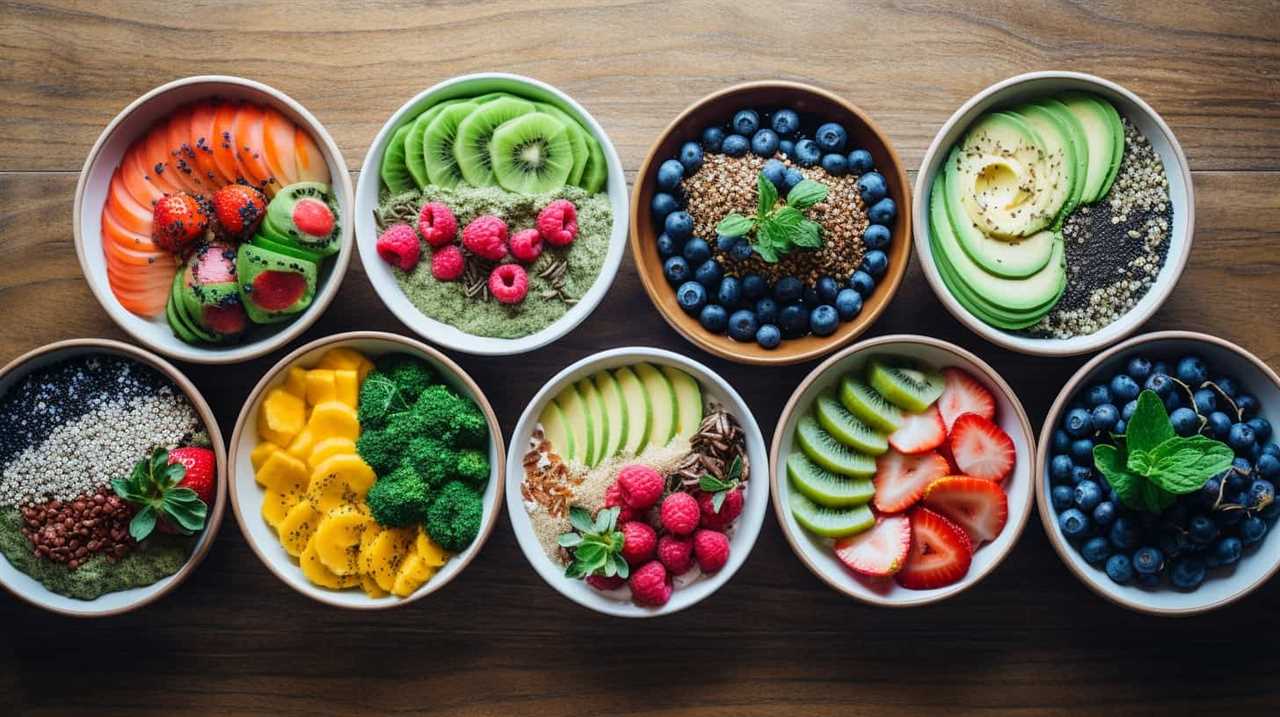
First and foremost, it’s crucial to ensure that the soil pH is within the optimal range. Chia seeds thrive in slightly acidic to neutral soil, with a pH level ranging from 6.0 to 7.5. Maintaining this pH range is essential for the plants’ nutrient uptake and overall health.
Additionally, it’s imperative to consider the suitable temperature range for chia seed cultivation. Chia seeds require a moderate temperature for germination and growth. The ideal range for chia cultivation is between 20 to 25 degrees Celsius. This temperature range promotes healthy seedling development and facilitates efficient photosynthesis, resulting in robust plants with higher yield potential.
Effective Irrigation Techniques
Implementing efficient irrigation techniques is essential for maximizing the growth and yield of chia seeds. To achieve this, we recommend the following practices:
- Drip irrigation: This method delivers water directly to the plant’s roots, minimizing water wastage and promoting better water absorption.
- Mulching: Applying a layer of organic mulch around the plants helps retain moisture in the soil, reducing the frequency of irrigation.
- Automated irrigation systems: These systems utilize sensors and timers to ensure precise watering based on the plant’s needs, conserving water and reducing labor.
By combining these techniques, chia growers can achieve optimal water conservation while promoting healthy plant growth. Drip irrigation and mulching reduce water loss through evaporation, while automated systems prevent overwatering.

Embracing these practices not only maximizes chia seed yield but also contributes to sustainable farming practices.
Efficient Fertilization Methods
Our team has discovered efficient fertilization methods that greatly enhance the growth and yield of chia seeds. In sustainable farming, it’s crucial to use organic fertilizers that are environmentally friendly and promote soil health.
One effective method we recommend is the use of compost, which not only provides essential nutrients but also improves soil structure and water retention. Another technique is the application of vermicompost, which contains beneficial microorganisms that enhance nutrient availability and plant growth.
Additionally, we’ve found that utilizing cover crops, such as legumes, can fix nitrogen in the soil naturally, reducing the need for synthetic fertilizers. These sustainable fertilization methods not only improve the overall health of the chia plants but also contribute to the long-term sustainability of the farming system.
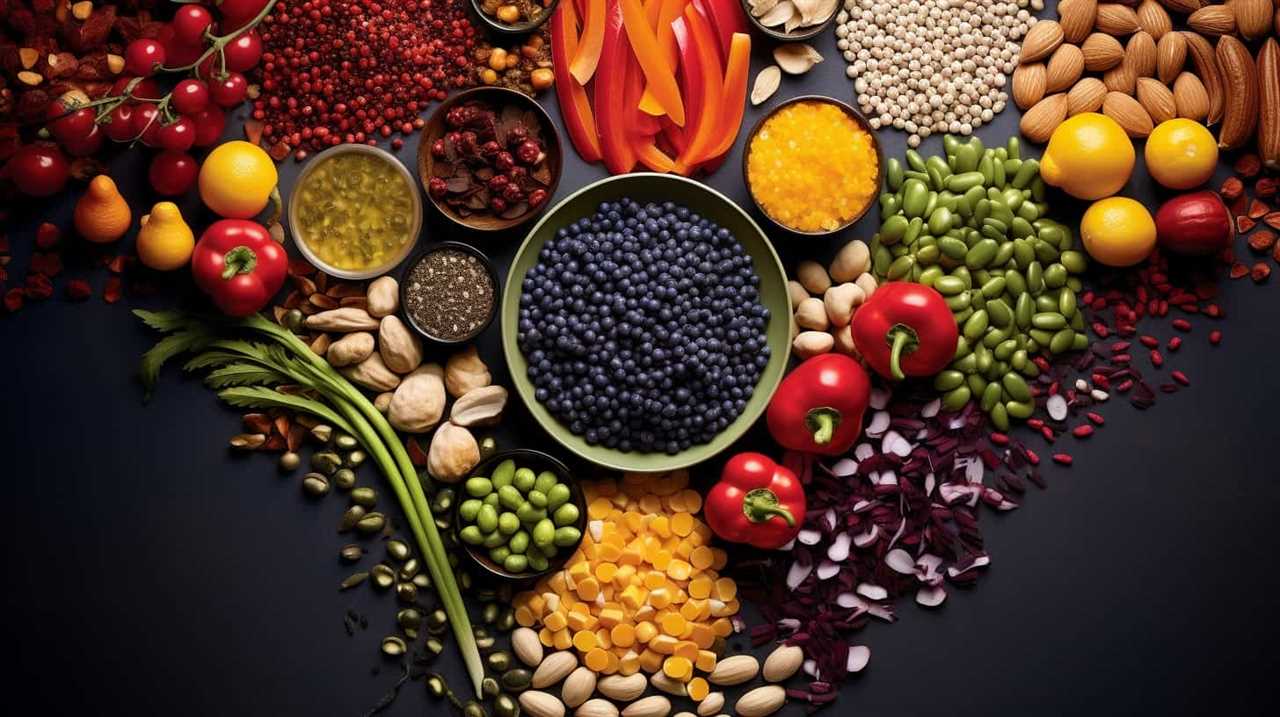
Transitioning into weed control strategies, we’ll now discuss effective methods to manage weed growth and ensure optimal chia seed production.
Weed Control Strategies
We employ effective weed control strategies to ensure optimal chia seed production. Here are three key techniques we use:
- Mulching Techniques: We apply a layer of organic mulch around the chia plants to suppress weed growth. This helps to conserve soil moisture, regulate soil temperature, and prevent weed seeds from germinating.
- Organic Pest Control: We utilize natural methods to control pests that may compete with chia plants for resources. This includes introducing beneficial insects, such as ladybugs and lacewings, which prey on pests like aphids and caterpillars.
- Regular Monitoring and Manual Removal: We closely monitor the chia fields and manually remove any weeds that emerge. This proactive approach helps to prevent weed competition and ensures that the chia plants have access to essential nutrients and sunlight.
Harvesting and Processing Tips
What are the key tips for harvesting and processing chia seeds to maximize profitability?
When it comes to harvesting chia seeds, timing is crucial. It’s best to wait until the flowers have dried up and the seeds have turned dark. This ensures maximum seed maturity and yield.

Once harvested, it’s important to dry the seeds properly to prevent spoilage and maintain their quality.
Proper storage and preservation techniques are also essential to maintain the freshness and nutritional value of chia seeds.
As for processing, it’s recommended to clean the seeds thoroughly to remove any impurities before packaging.
Moreover, staying updated on market trends and demand for chia seeds is crucial to maximize profitability. By understanding consumer preferences and adapting to market demands, chia seed cultivators can stay ahead in this competitive industry.
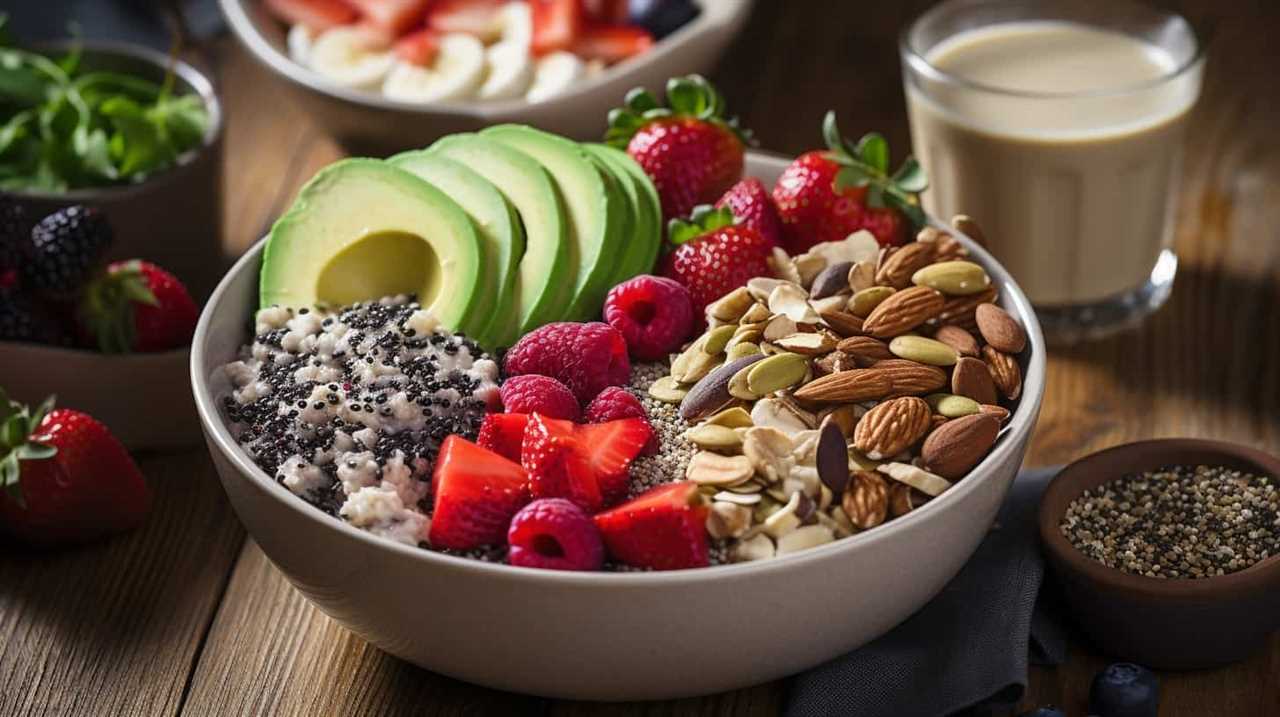
Conclusion
In conclusion, implementing profitable practices for chia seeds cultivation is crucial for maximizing yield and ensuring success in this industry.
One interesting statistic to note is that by effectively controlling weeds, farmers can increase their chia seed production by up to 30%. This highlights the importance of implementing weed control strategies to optimize crop growth and profitability.
By following the ideal growing conditions, irrigation techniques, fertilization methods, and harvesting tips mentioned in this article, farmers can confidently cultivate chia seeds with expert precision.
Hi, I’m Sarah. I write for Turtle Tree Seeds, a news blog that loves food – all kinds of food. But especially bacon, chocolate, and veggies. We’re on a mission to show the world that you can enjoy all of those things, even kale and brussels sprouts. Because we believe that when it comes to food, there’s no such thing as guilty pleasures. Just pleasures.
I’m also a huge fan of puns (obviously).
Commercial Production of Chia Seeds
Proven Techniques for High Yield Seed Harvesting

Did you know that using effective techniques for seed collection can significantly boost crop yields?
Translated in English (United States): Did you know that using effective techniques for seed collection can significantly boost crop yields?
In this article, we will explore proven methods to optimize your seed harvesting process.
From soil preparation and planting techniques to irrigation and pest control strategies, we will delve into the precise steps needed for high yield seed harvesting.
By implementing these techniques, you can improve your crop production and contribute to the liberation of sustainable agriculture.

Key Takeaways
- Crop rotation is essential for preventing pest and disease buildup and improving soil health.
- Cover crops help prevent soil erosion, improve soil structure, and increase organic matter content, enhancing soil fertility and productivity.
- Optimal planting and spacing methods, such as companion planting and crop rotation, contribute to higher yields and healthier plants.
- Efficient harvesting and seed processing methods, including proper seed storage and the use of state-of-the-art machinery, ensure maximum yield and high-quality seeds for customers.
Soil Preparation Techniques
Before we can achieve high yield seed harvesting, it’s essential that we properly prepare the soil using proven techniques.
Two key techniques that have proven effective in maximizing yield are crop rotation and cover crops.
Crop rotation involves systematically changing the type of crop grown in a particular field over multiple growing seasons. This technique helps prevent the buildup of pests and diseases that are specific to certain crops, thus reducing the need for chemical interventions. Additionally, crop rotation allows for the diversification of nutrients in the soil, leading to healthier plants and improved yield.
Cover crops, on the other hand, are planted to cover the soil during periods of fallow or between main crops. These crops help prevent soil erosion, improve soil structure, and increase organic matter content, ultimately enhancing the soil’s fertility and productivity.
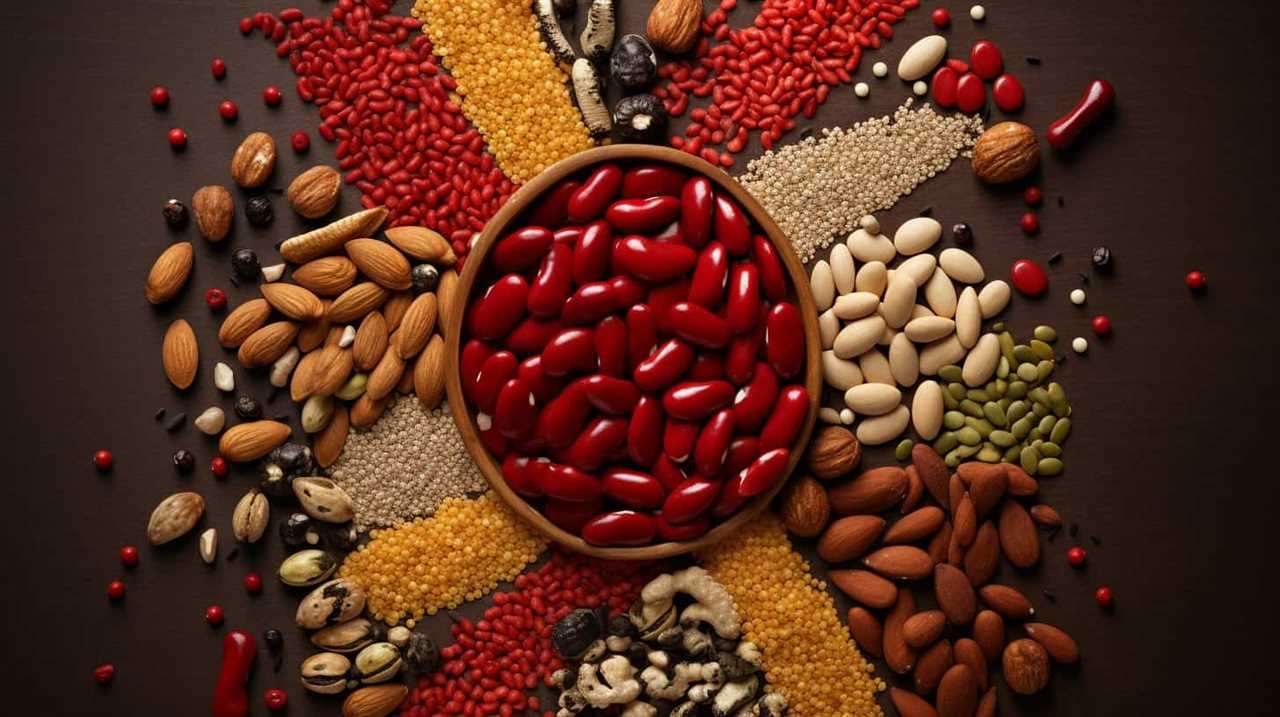
Optimal Planting and Spacing Methods
To achieve high yield seed harvesting, we implement optimal planting and spacing methods that maximize crop growth and yield. Two key techniques that contribute to this are companion planting and crop rotation. Companion planting involves planting different crops together that benefit each other, either by providing nutrients, repelling pests, or attracting beneficial insects. This symbiotic relationship helps to optimize plant growth and reduce the need for chemical inputs. On the other hand, crop rotation involves systematically changing the type of crop grown in a specific area over time. This helps to break pest and disease cycles, improve soil health, and prevent nutrient depletion. By implementing these techniques, we can ensure that our crops are planted and spaced optimally, leading to higher yields and healthier plants.
| Companion Planting | Crop Rotation |
|---|---|
| – Benefits: | – Benefits: |
| – Nutrient sharing | – Pest control |
| – Pest repellent | – Disease prevention |
| – Attracts beneficial insects | – Improves soil health |
| – Reduces chemical inputs | – Prevents nutrient depletion |
Effective Irrigation and Nutrient Management
Now, we continue our discussion by focusing on how we effectively manage irrigation and nutrients to maximize seed yield.
To achieve water conservation in seed production, we employ the following strategies:
- Drip irrigation: By delivering water directly to the root zone, we minimize evaporation and ensure efficient water usage.
- Mulching: Applying organic or synthetic materials around the plants reduces soil moisture evaporation and weed competition, promoting optimal water retention.
- Rainwater harvesting: We capture and store rainfall runoff for later use, reducing reliance on conventional water sources.
In addition to water management, crop rotation plays a crucial role in nutrient management. Here’s how we optimize nutrient levels:

- Rotating crops: By alternating different plant species, we prevent nutrient depletion and reduce the risk of nutrient imbalances.
- Cover cropping: Growing cover crops between seed production cycles helps improve soil fertility and nutrient availability.
- Nutrient testing: Regular soil and tissue analysis allows us to identify nutrient deficiencies and tailor fertilizer application accordingly.
Pest and Disease Control Strategies
To effectively manage pest and disease control in our seed production, we employ proven strategies that prioritize proactive measures and regular monitoring. Integrated pest management (IPM) is a key approach we use, which focuses on preventing and managing pests through a combination of techniques. This includes cultural practices such as crop rotation and sanitation, as well as biological controls like the use of beneficial insects or nematodes. We also implement natural remedies, such as botanical extracts and microbial products, to control pests and diseases without relying solely on synthetic chemicals. By integrating these strategies into our seed production system, we are able to minimize the impact of pests and diseases on our crops, ensuring high-quality and healthy seeds for our customers.
| Pest and Disease Control Strategies |
|---|
| Integrated Pest Management |
| Natural Remedies |
| Proactive Measures |
| Regular Monitoring |
| Cultural Practices |
Efficient Harvesting and Seed Processing Methods
We employ efficient harvesting and seed processing methods to ensure maximum yield and quality. These methods include:
- Seed Storage Methods: We utilize proper storage techniques to maintain the viability of the harvested seeds. This involves storing seeds in a cool and dry environment, protecting them from pests and diseases, and avoiding exposure to excessive moisture or sunlight.
- Seed Viability Testing: Before storing the seeds, we conduct viability tests to determine their germination potential. This helps us identify the percentage of viable seeds and discard any non-viable ones. Various methods, such as the tetrazolium test or germination tests, are employed to assess seed viability accurately.
- Careful Cleaning and Sorting: We meticulously clean and sort the harvested seeds to remove any impurities, debris, or damaged seeds. This ensures that only high-quality seeds are stored for future use or distribution.
Conclusion
In conclusion, by implementing these proven techniques for high yield seed harvesting, we can cultivate a bountiful harvest that’s as fruitful as a lush garden in full bloom.
With the right soil preparation, planting and spacing methods, irrigation and nutrient management, as well as pest and disease control strategies, we can ensure optimal growth and vitality in our crops.
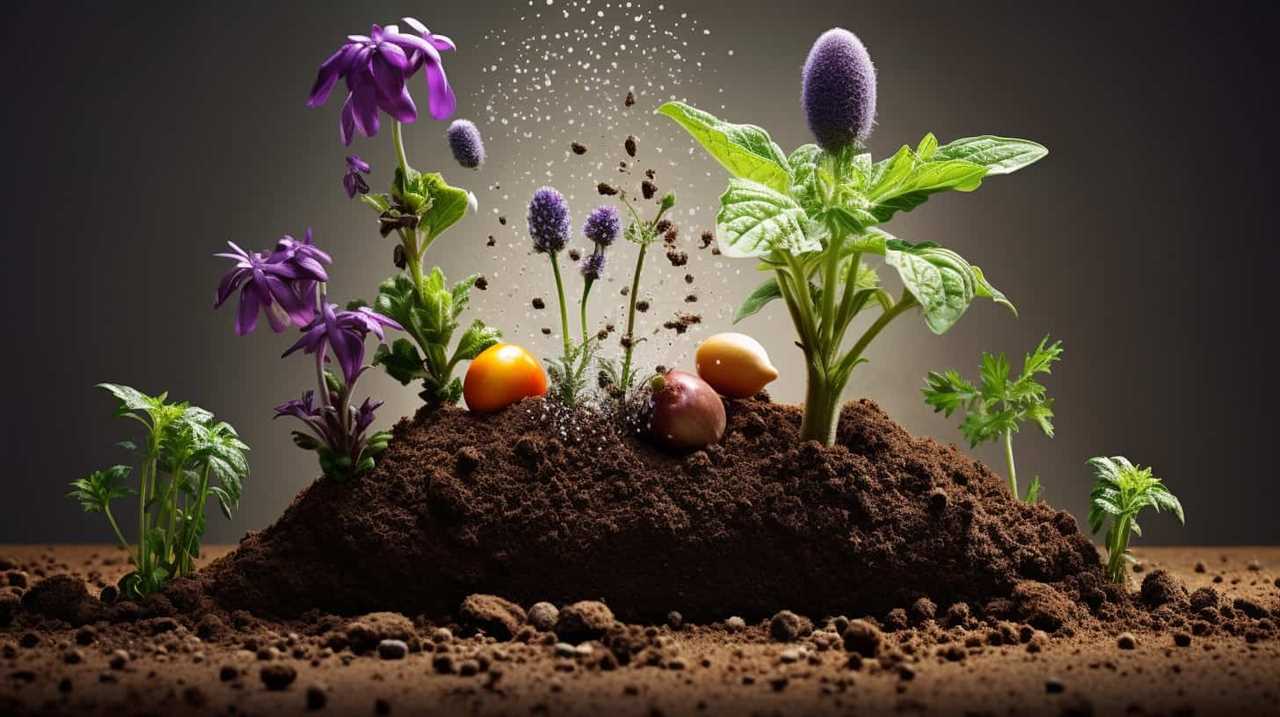
By employing efficient harvesting and seed processing methods, we can reap the rewards of our labor, like expert gardeners tending to their precious blossoms.
Hi, I’m Sarah. I write for Turtle Tree Seeds, a news blog that loves food – all kinds of food. But especially bacon, chocolate, and veggies. We’re on a mission to show the world that you can enjoy all of those things, even kale and brussels sprouts. Because we believe that when it comes to food, there’s no such thing as guilty pleasures. Just pleasures.
I’m also a huge fan of puns (obviously).
Commercial Production of Chia Seeds
Profitable Strategies for Cultivating Commercial Seed Crops
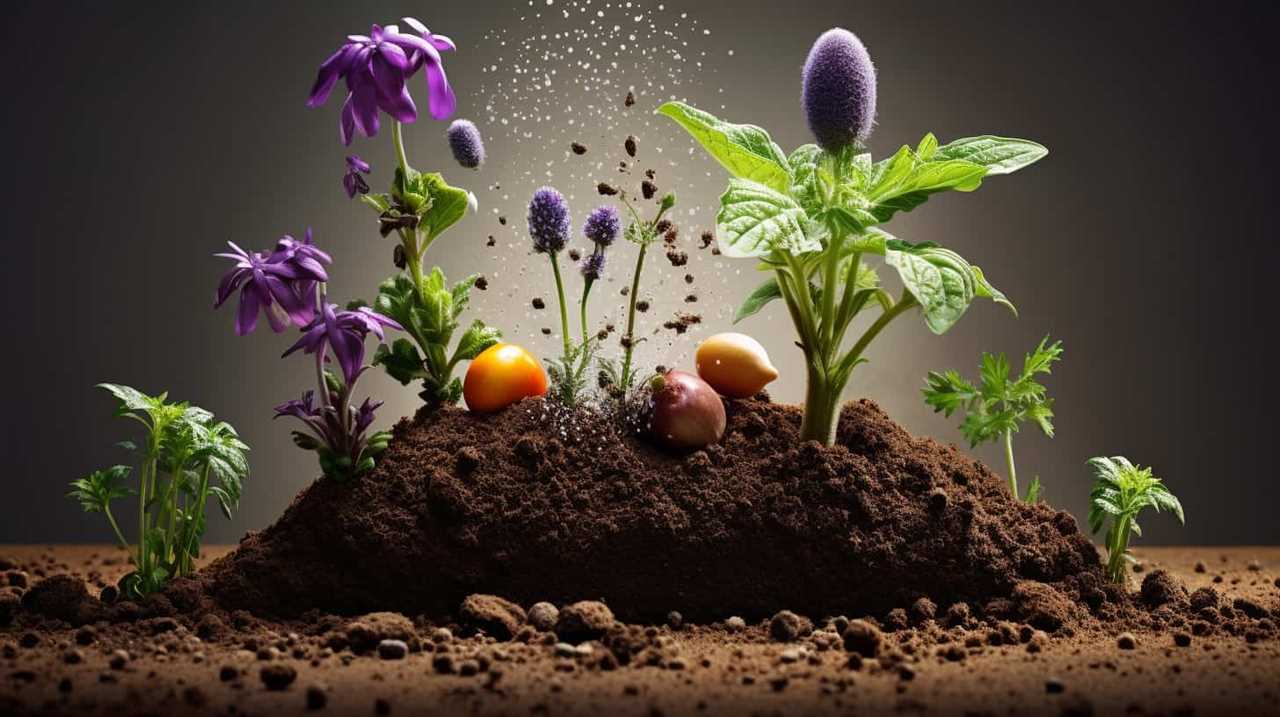
We have traveled through the vast realms of knowledge in search of the secrets to successfully growing commercial seed crops. Join us on this enlightening journey as we uncover the strategies necessary for achieving prosperity.
By delving into soil preparation, seed selection, irrigation, pest control, and post-harvest handling, we will equip you with the tools to thrive in this ever-evolving industry.
Together, let’s unlock the potential and reap the bountiful rewards of cultivating thriving seed crops.
Key Takeaways
- Cover crops protect and enrich the soil, preventing erosion and suppressing weeds while improving soil structure and nutrient content.
- Organic amendments like compost or manure enhance soil health, improving structure, water-holding capacity, and nutrient availability.
- High-quality seeds are essential for successful cultivation of seed crops, considering factors like germination rate and disease resistance.
- Efficient watering techniques, monitoring soil moisture levels, and crop rotation can maximize water usage, enhance water efficiency, and maintain soil health.
Soil Preparation and Fertility Management
In this article, we’ll explore the essential steps for preparing the soil and managing its fertility when cultivating commercial seed crops.

Soil preparation plays a crucial role in promoting optimal plant growth and maximizing crop yields. One important technique is the use of cover crops, which are grown primarily to protect and enrich the soil. Cover crops help prevent erosion, suppress weeds, and enhance soil structure. They also provide organic matter when incorporated into the soil, improving its fertility and nutrient content.
Another vital aspect of soil preparation is the application of organic amendments. These amendments, such as compost or manure, supply essential nutrients and enhance soil health. They improve soil structure, water-holding capacity, and nutrient availability, leading to healthier and more productive seed crops.
Seed Selection and Sourcing
To ensure success in cultivating commercial seed crops, we prioritize the selection and sourcing of high-quality seeds. Seed quality assessment is crucial in determining the viability and performance of seeds. We carefully evaluate factors such as germination rate, purity, vigor, and disease resistance. This ensures that our crops have the best chances of success and high yields.
Additionally, we emphasize genetic diversity preservation by sourcing seeds from diverse gene pools. This helps us maintain a resilient and adaptable seed stock that can withstand changing environmental conditions and evolving pests and diseases. We also collaborate with reputable seed suppliers who share our commitment to quality and genetic diversity.
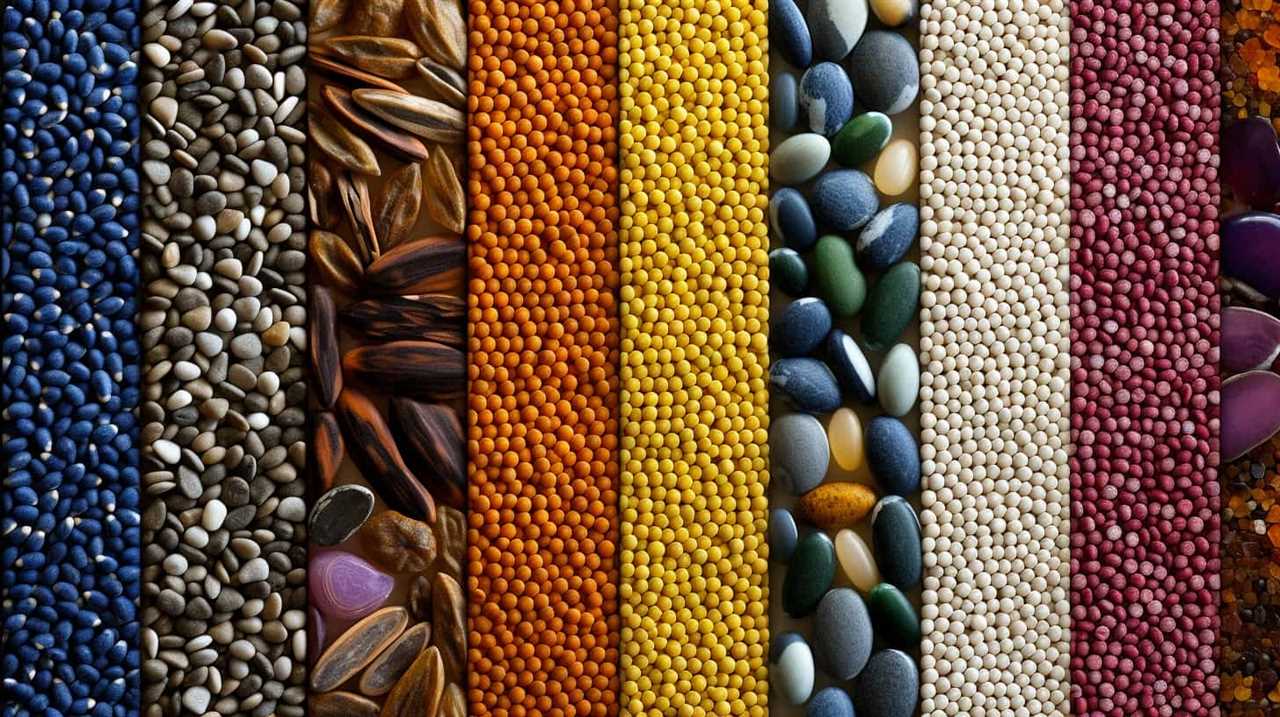
Irrigation and Water Management
We frequently optimize irrigation and water management practices to ensure the success of our commercial seed crops. Efficient watering is essential for maximizing crop yields and minimizing water waste. By carefully monitoring soil moisture levels and employing precision irrigation techniques, we can provide the right amount of water at the right time, avoiding both over- and under-watering. Additionally, implementing crop rotation strategies helps to enhance water efficiency and maintain soil health. By alternating crops with different water requirements, we can reduce the risk of water stress and optimize water usage throughout the growing season. The table below demonstrates the benefits of efficient watering and crop rotation in commercial seed crop production:
| Benefits of Efficient Watering | Benefits of Crop Rotation |
|---|---|
| – Minimizes water waste | – Enhances water efficiency |
| – Maximizes crop yields | – Maintains soil health |
| – Reduces water stress | – Optimizes water usage |
Pest and Disease Control
Continuing with our focus on ensuring the success and profitability of our commercial seed crops, let’s now delve into effective pest and disease control strategies. Integrated pest management (IPM) is a holistic approach that combines various methods to keep pests and diseases in check while minimizing harm to the environment.
Here are four key strategies to consider:
- Crop rotation: Rotating crops helps disrupt pest and disease cycles, reducing their impact on subsequent plantings.
- Biological control: Introducing beneficial insects, such as ladybugs and predatory mites, can help control pests naturally.
- Cultural practices: Implementing good sanitation practices, such as removing crop residues and using clean equipment, can reduce disease incidence.
- Disease-resistant varieties: Selecting and planting seed varieties with inherent resistance to common diseases can greatly reduce the need for chemical interventions.
By incorporating these strategies, we can effectively manage pests and diseases while promoting the liberation of our commercial seed crops.
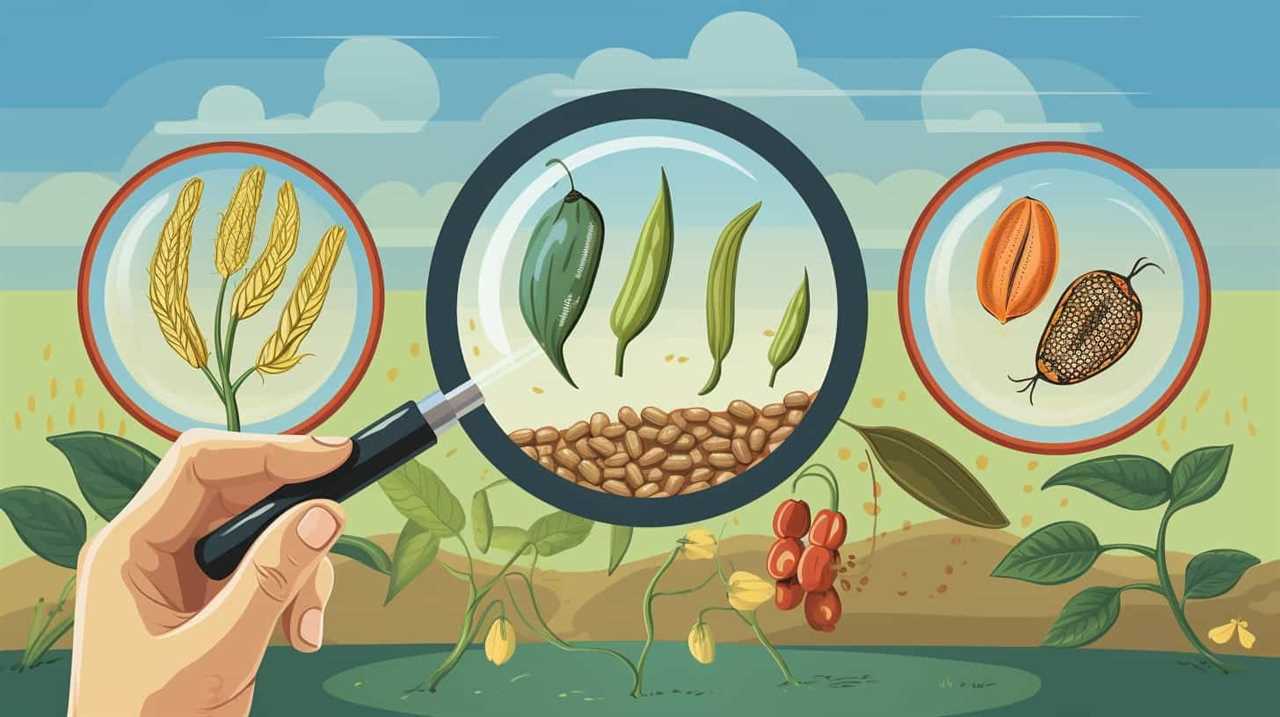
Now, let’s move on to the next section on harvesting and post-harvest handling.
Harvesting and Post-Harvest Handling
For efficient and successful cultivation of commercial seed crops, proper harvesting and post-harvest handling are crucial steps. These processes ensure the preservation of seed quality and viability, enabling farmers to maximize their profits. Harvesting involves the careful removal of mature seedheads or pods from the plants. Post-harvest handling includes activities such as drying and storage, which are essential for maintaining seed quality and preventing deterioration.
To emphasize the importance of these steps, we have compiled a table outlining the recommended practices for drying and storage, as well as quality assurance measures:
| Drying and Storage | Quality Assurance |
|---|---|
| – Ensure proper air circulation during drying | – Conduct regular quality checks |
| – Dry seeds to the appropriate moisture content | – Monitor temperature and humidity levels |
| – Store seeds in cool, dry, and well-ventilated spaces | – Implement pest control measures |
| – Use suitable containers to prevent moisture ingress | – Label and track seed lots |
Conclusion
In conclusion, profitable strategies for cultivating commercial seed crops require careful attention to several key factors.
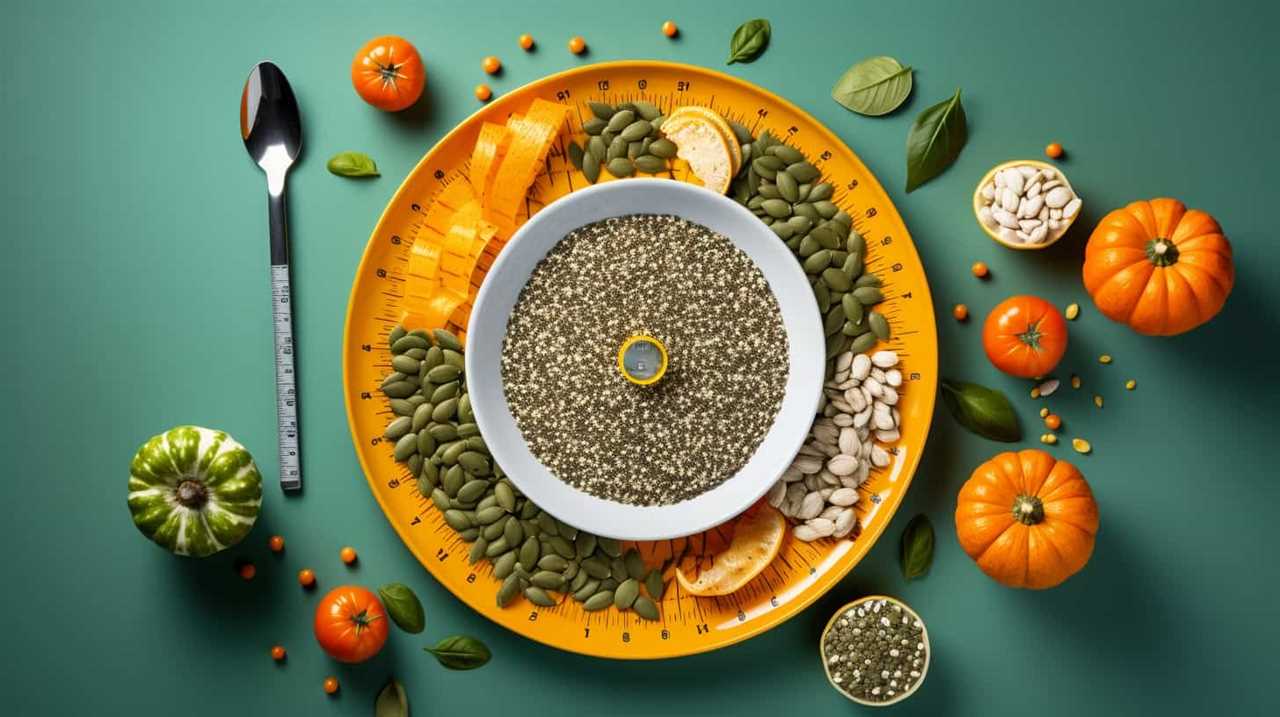
- Soil preparation and fertility management are essential for creating optimal growing conditions for the crops. This includes techniques such as tilling, adding organic matter, and ensuring proper nutrient levels.
- Seed selection and sourcing play a crucial role in determining the quality of the crops. Farmers must choose high-quality seeds that are well-suited to their specific growing conditions.
- Irrigation and water management are important considerations, as water is essential for seed crop growth. Farmers need to carefully monitor and regulate water usage to ensure that the crops receive adequate moisture.
- Pest and disease control is necessary to protect the crops from potential damage. Farmers must implement effective strategies to minimize the impact of pests and diseases on their seed crops.
- Harvesting and post-harvest handling are critical steps in maintaining the quality of the seeds. Proper techniques and equipment must be used to ensure that the seeds are harvested at the right time and are handled carefully to prevent damage.
By implementing these practices, farmers can maximize their crop yields and ensure the quality of their seeds. The success of these strategies is crucial for the sustainability and profitability of the seed industry. Without proper attention to these factors, the potential for achieving extraordinary seed crop production may remain elusive.
Hi, I’m Sarah. I write for Turtle Tree Seeds, a news blog that loves food – all kinds of food. But especially bacon, chocolate, and veggies. We’re on a mission to show the world that you can enjoy all of those things, even kale and brussels sprouts. Because we believe that when it comes to food, there’s no such thing as guilty pleasures. Just pleasures.
I’m also a huge fan of puns (obviously).
Commercial Production of Chia Seeds
11 Profitable Tips for Commercial Seed Farming

Are you ready to take your agricultural seed business to the next level?
We’ve got you covered with our 11 profitable tips that will revolutionize your chia seed cultivation.
From selecting the right varieties to optimizing soil conditions, implementing effective irrigation techniques to managing pests and diseases, we’ve got all the technical know-how you need.
Get ready to maximize your crop yield, develop a killer marketing strategy, and stay ahead of industry trends.
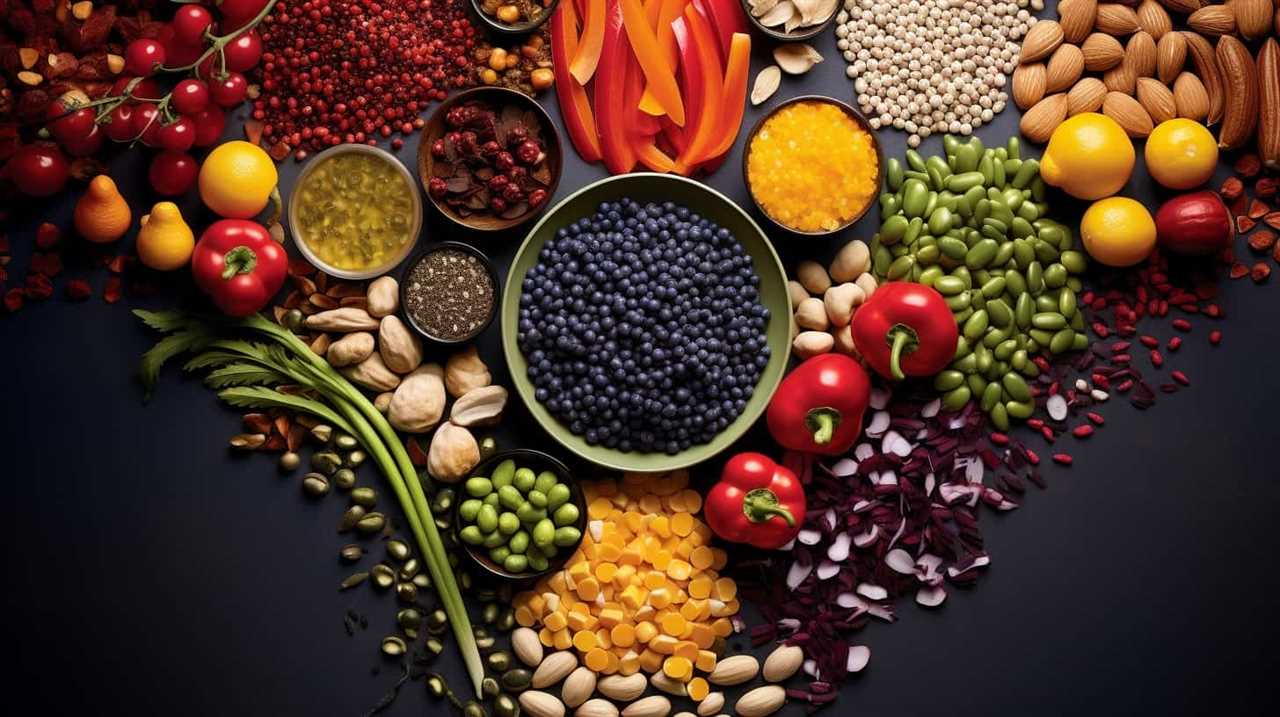
Let’s liberate your seed farming success together.
Key Takeaways
- Choose chia seed varieties with high germination rates, disease resistance, and adaptability to different climates for successful seed development and profitable yields.
- Proper soil nutrient management and fertilization are essential for maximizing chia seed quality and yield.
- Implement efficient irrigation techniques, such as drip irrigation or sprinklers, and proper soil moisture management to optimize water usage and prevent under or over-watering.
- Focus on proven strategies and techniques, including maximizing pollination rates, improving seed germination, and implementing pest and disease management practices, to maximize chia seed crop yield.
Selecting the Right Chia Seed Varieties
When it comes to chia seed breeding, it’s crucial to choose varieties that exhibit high germination rates and optimal growth characteristics. Germination is a critical stage in seed development, and selecting varieties with excellent germination potential ensures a higher success rate for your commercial seed farming venture.
Additionally, it’s essential to consider traits such as disease resistance, yield potential, and adaptability to different climatic conditions. By selecting chia seed varieties that possess these desirable qualities, we can maximize our chances of attaining profitable yields and maintaining a sustainable seed farming operation.
With the right chia seed varieties, we can now transition into the subsequent section about optimizing soil conditions for chia seed cultivation.
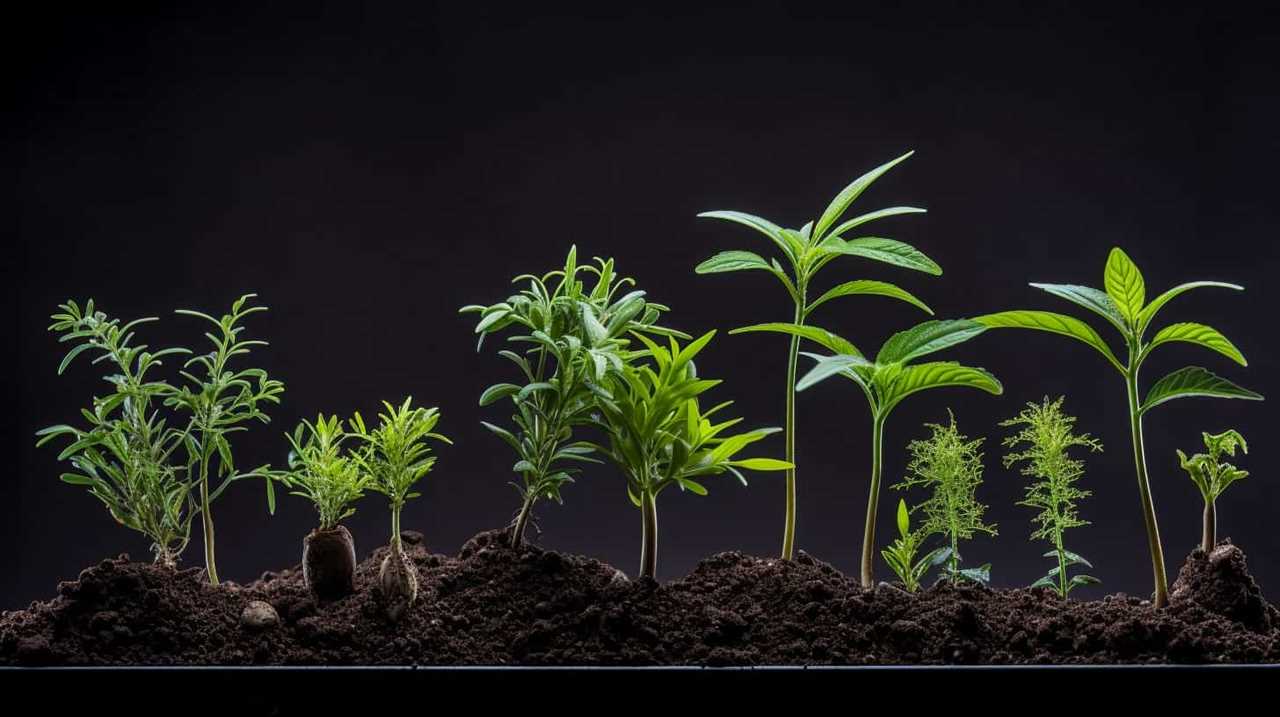
Optimizing Soil Conditions for Chia Seed Cultivation
To optimize soil conditions for chia seed cultivation, we must consider three key points: soil pH requirements, nutrient availability and uptake, and soil moisture management.
Chia plants thrive in a slightly acidic soil with a pH range of 6.0 to 7.5.
It’s crucial to ensure that essential nutrients are readily available and properly absorbed by the plants, which can be achieved through regular soil testing and appropriate fertilization.
Additionally, maintaining adequate soil moisture levels is essential for optimal chia seed production, as the plants require consistent moisture but not excessive waterlogging.
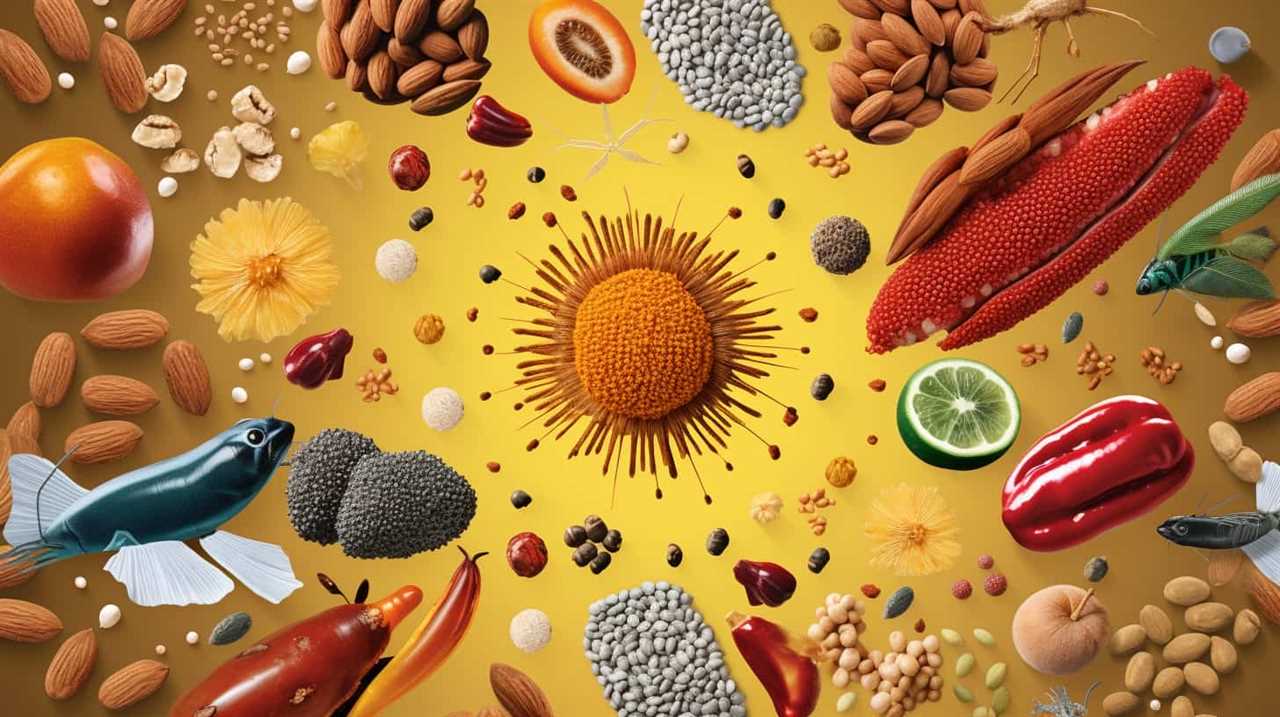
Soil Ph Requirements
We optimize soil conditions for chia seed cultivation by testing and adjusting the soil pH. Soil pH plays a crucial role in determining plant growth and nutrient availability. Chia plants thrive in slightly acidic to neutral soil, with a pH range of 6.0 to 7.5. To ensure optimum pH levels, we recommend conducting regular soil tests to assess the current pH and make necessary amendments. Soil amendments, such as lime or sulfur, can be added to raise or lower the pH respectively. Maintaining the ideal pH level enhances nutrient uptake, promotes healthy root development, and ultimately leads to higher chia seed yields. By understanding the importance of soil testing and implementing necessary amendments, we can create optimal soil conditions for successful chia seed cultivation.
| Soil pH Level | Soil Condition |
|---|---|
| < 6.0 | Acidic |
| 6.0 – 7.5 | Neutral |
| > 7.5 | Alkaline |
Nutrient Availability and Uptake
To optimize soil conditions for chia seed cultivation, we continue by focusing on nutrient availability and uptake, which are crucial factors for achieving successful and profitable commercial seed farming.
Nutrient deficiency prevention is essential to ensure healthy plant growth and maximize seed production. Conducting regular soil nutrient testing is an effective tool to assess the nutrient status of the soil and make informed decisions regarding fertilizer application.
By analyzing soil samples, farmers can determine the nutrient levels present in the soil and identify any deficiencies or imbalances. This enables them to tailor their fertilizer application to address specific nutrient requirements of chia plants.

Proper nutrient management increases nutrient availability in the soil, ensuring optimal uptake by the plants. By maintaining a balanced nutrient supply, farmers can enhance chia seed quality, yield, and profitability.
Soil Moisture Management
In the pursuit of optimizing soil conditions for chia seed cultivation, our focus turns to soil moisture management. Effective irrigation techniques play a crucial role in maintaining the ideal moisture levels for chia crops. To ensure liberation from crop infestations and maximize yield, here are some key points to consider:
- Proper scheduling of irrigation to avoid under or over-watering.
- Monitoring soil moisture levels regularly to make informed irrigation decisions.
- Utilizing efficient irrigation systems such as drip irrigation or sprinklers.
- Implementing mulching techniques to conserve soil moisture and suppress weed growth.
- Incorporating organic matter into the soil to improve water-holding capacity and drainage.
Implementing Effective Irrigation Techniques
When it comes to implementing effective irrigation techniques for commercial seed farming, there are several key points to consider.
First, water conservation strategies are essential for maximizing water efficiency and minimizing waste. This can include methods such as using drip irrigation systems that deliver water directly to the plant roots, reducing evaporation and runoff.
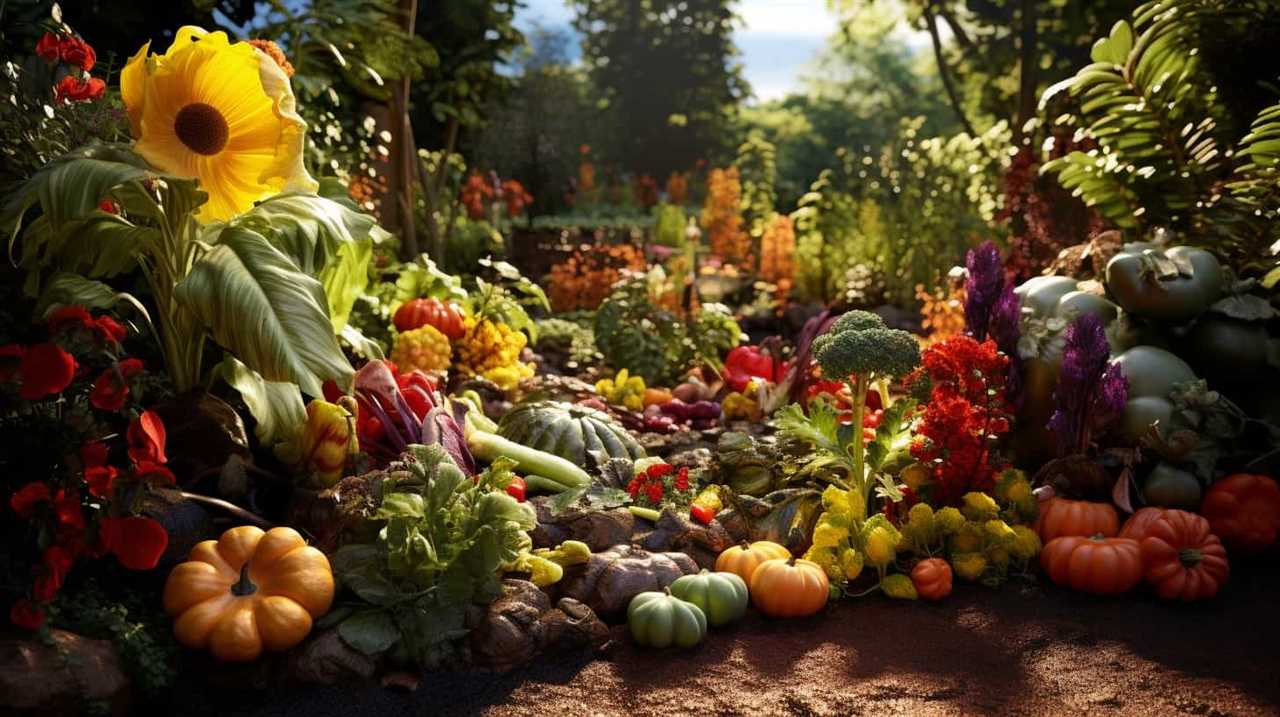
Additionally, proper soil moisture management is crucial to ensure that plants receive the right amount of water at the right time, avoiding both under and over-watering.
Water Conservation Strategies
How can we effectively implement irrigation techniques to conserve water on commercial seed farms? Water conservation is crucial for the long-term sustainability of seed farming.
Here are five innovative irrigation methods that can help save water and promote environmental liberation:
- Drip irrigation: Delivering water directly to the plant roots, reducing evaporation and water waste.
- Precision sprinklers: Using advanced technology to deliver water precisely to the plants, minimizing runoff and evaporation.
- Soil moisture sensors: Monitoring soil moisture levels to ensure water is applied only when necessary, preventing overwatering.
- Mulching: Applying organic materials to the soil surface to reduce evaporation and retain moisture.
- Crop rotation: Alternating crops to improve soil health and water retention capacity.
By implementing these water-saving techniques, commercial seed farms can conserve water, reduce costs, and contribute to a more sustainable agricultural industry.

Now, let’s explore the benefits of drip irrigation in the subsequent section.
Drip Irrigation Benefits
We have found that implementing drip irrigation on commercial seed farms offers numerous benefits, including efficient water usage and improved plant health. Drip irrigation is a highly efficient irrigation system that delivers water directly to the root zone of plants, minimizing water loss due to evaporation or runoff. This method significantly reduces water wastage, making it a sustainable option for seed farmers. Additionally, drip irrigation promotes better plant health by ensuring a consistent supply of water and nutrients to the roots. This leads to stronger and more resilient plants, resulting in higher crop yields. The table below provides a comparison between drip irrigation and traditional sprinkler irrigation, highlighting the water efficiency of the former.
| Drip Irrigation | Sprinkler Irrigation | |
|---|---|---|
| Water Usage | Low | High |
| Water Loss due to Evaporation | Minimal | Significant |
| Water Loss due to Runoff | Minimal | Significant |
| Plant Health | Improved | Average |
| Crop Yield | High | Average |
Soil Moisture Management
To effectively manage soil moisture, we implement irrigation techniques that optimize water usage and promote plant health. Managing irrigation is crucial for successful seed farming, as it ensures the right amount of water reaches the crops at the right time. Here are five key practices for effective soil moisture management:
- Implement soil moisture monitoring systems to accurately assess moisture levels.
- Use drip irrigation to deliver water directly to the plant roots, reducing water loss through evaporation.
- Employ mulching techniques to conserve soil moisture by reducing evaporation and weed growth.
- Consider using automated irrigation systems to ensure precise water application based on crop needs.
- Implement proper scheduling to avoid over-irrigation, which can lead to waterlogging and nutrient leaching.
By implementing these techniques, farmers can optimize water usage, minimize water wastage, and promote healthy plant growth.
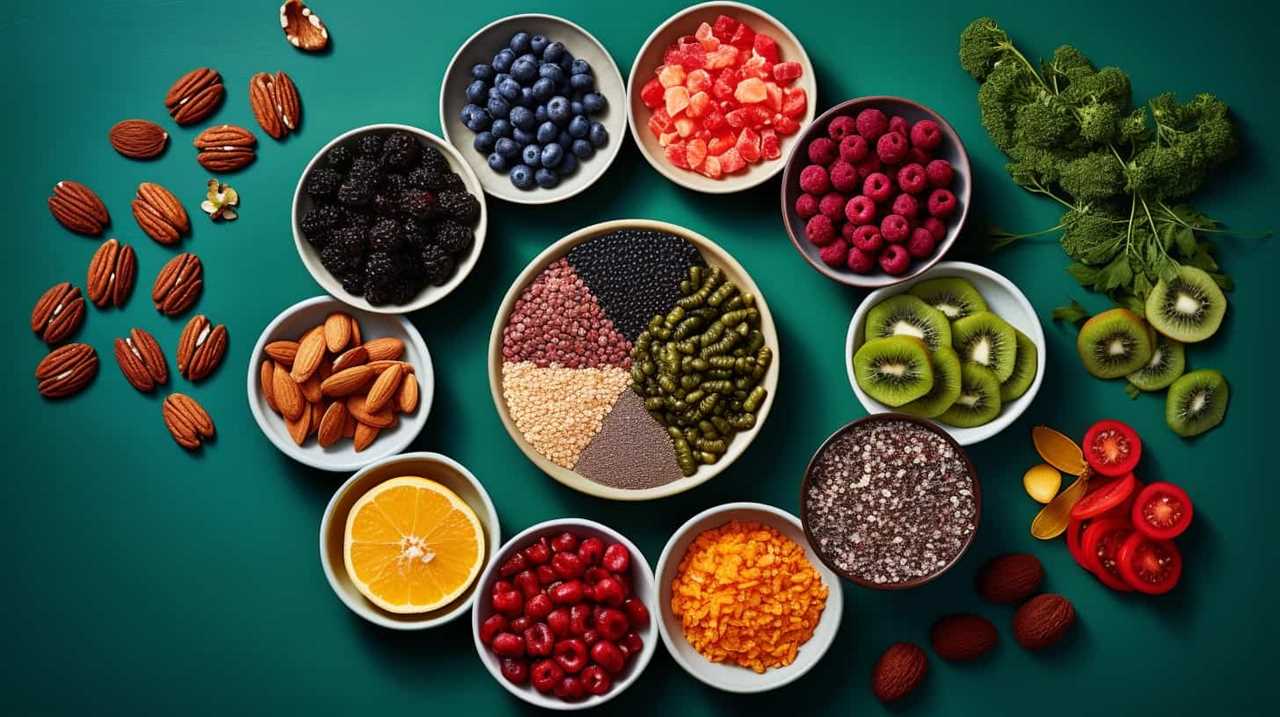
This lays the foundation for maximizing chia seed crop yield, as we’ll discuss in the next section.
Maximizing Chia Seed Crop Yield
To consistently achieve high chia seed crop yields, our commercial seed farming operation focuses on implementing proven strategies and techniques. Maximizing pollination rates and improving seed germination are key factors in achieving optimal chia seed crop yield.
To maximize pollination rates, we employ several methods. We ensure that there’s a sufficient population of pollinators, such as bees, in the area. We also provide them with a conducive environment by planting diverse flowering plants nearby. Additionally, we practice proper timing of planting to coincide with peak pollinator activity.
Improving seed germination is crucial for maximizing chia seed crop yield. We carefully select high-quality seeds and provide them with optimal conditions for germination, including proper soil moisture, temperature, and light exposure. We also conduct regular soil tests to ensure the soil is well-balanced and nutrient-rich, promoting healthy seed development.
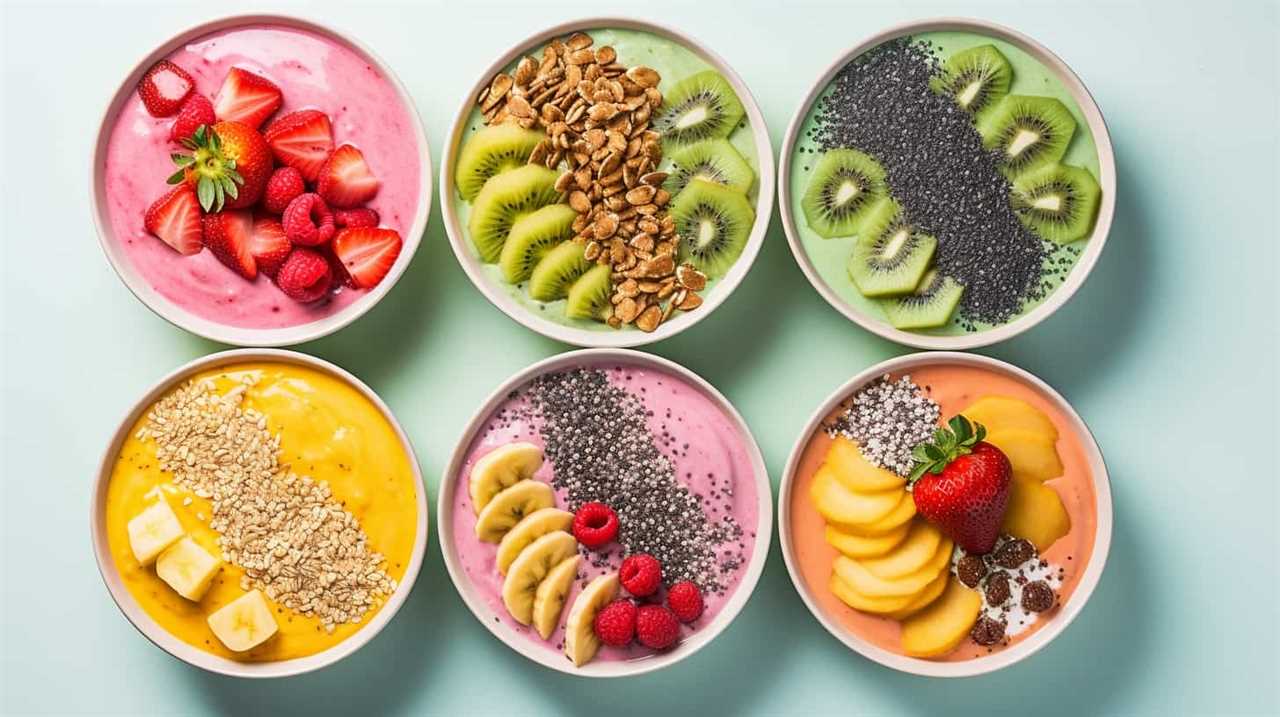
Managing Pests and Diseases in Chia Seed Farming
When it comes to managing pests and diseases in chia seed farming, prevention is key. By implementing proper crop management practices, such as regular field inspections and proper sanitation, we can prevent infestations from occurring in the first place.
Additionally, choosing disease-resistant chia varieties can greatly reduce the risk of plant diseases and minimize the need for chemical interventions.
Preventing Crop Infestations
At our commercial chia seed farm, we actively mitigate crop infestations by implementing effective pest and disease management strategies. To prevent crop infestations, we employ the following techniques:
- Crop rotation: By rotating the crops in our fields, we disrupt the life cycle of pests and diseases, reducing their population and preventing them from establishing a stronghold.
- Biological pest control: We introduce beneficial insects, such as ladybugs and lacewings, that prey on pests and keep their populations in check. This natural method eliminates the need for harmful chemical pesticides.
- Regular monitoring: We closely monitor our crops for any signs of pest or disease infestations. Early detection allows us to take prompt action and prevent the spread of infestations.
- Sanitation practices: We maintain clean farming practices by removing crop residues and weeds that could harbor pests and diseases. This helps create an unfavorable environment for infestations.
- Integrated pest management: We follow a comprehensive approach that combines various strategies, including cultural practices, biological controls, and targeted use of pesticides when necessary. This integrated approach ensures effective pest and disease management while minimizing the impact on the environment.
Disease-Resistant Chia Varieties
We prioritize disease-resistant chia varieties to effectively manage pests and diseases in our chia seed farming operations. By implementing chia seed cultivation techniques that focus on disease resistance, we can significantly reduce the risk of crop damage and ensure a higher yield. Disease-resistant chia varieties offer several benefits, including increased crop productivity, improved quality of chia seeds, and reduced reliance on chemical pesticides. These varieties are specifically bred to withstand common diseases and pests, making them more resilient and less prone to infestations. To highlight the advantages of disease-resistant chia varieties, the table below provides a comparison of their characteristics and benefits:

| Characteristics | Benefits |
|---|---|
| High disease resistance | Minimizes crop loss due to diseases |
| Increased yield potential | Improves profitability |
| Enhanced seed quality | Satisfies market demand for high-quality chia seeds |
| Reduced pesticide use | Environmentally-friendly farming practices |
| Long-term sustainability | Ensures consistent chia production for years to come |
Utilizing Organic Fertilizers for Higher Profits
To maximize profits in commercial seed farming, utilizing organic fertilizers is essential. Organic fertilizers, derived from natural sources, offer numerous advantages over chemical fertilizers. Here are five reasons why organic fertilizers are the key to higher profits and sustainable farming practices:
- Enhanced soil fertility: Organic fertilizers enrich the soil with essential nutrients, improving its structure and fertility for healthy plant growth.
- Long-term sustainability: Unlike chemical fertilizers that deplete soil nutrients over time, organic fertilizers promote long-term soil health and sustainability.
- Environmental friendliness: Organic fertilizers are derived from natural sources and don’t contain harmful chemicals, reducing the environmental impact of farming practices.
- Nutrient-rich crops: Organic fertilizers provide a balanced and slow-release of nutrients, resulting in nutrient-rich crops with enhanced flavor and nutritional value.
- Cost-effectiveness: While initially organic fertilizers may have a higher upfront cost, they contribute to long-term cost savings by reducing the need for synthetic inputs.
Efficient Weed Control Strategies for Chia Seed Farms
Implementing an effective weed control strategy is crucial for maximizing profits and maintaining the health of chia seed farms. To ensure a successful chia seed farming operation, it’s essential to employ efficient weed control techniques that promote organic weed management.
Organic weed management involves using natural methods to suppress and control weeds without relying on synthetic herbicides. This approach isn’t only environmentally friendly but also aligns with the principles of sustainable agriculture.
Some effective weed control techniques for chia seed farms include mulching, hand weeding, crop rotation, and the use of cover crops. These methods help smother weeds, prevent their growth, and improve soil health.

By implementing these organic weed management strategies, chia seed farmers can effectively control weeds and maintain a healthy crop, ultimately leading to higher profits.
Now, let’s delve into the next section, which discusses the crucial aspects of harvesting and post-harvest handling of chia seeds.
Harvesting and Post-Harvest Handling of Chia Seeds
After efficiently implementing organic weed control techniques, such as mulching and hand weeding, we can now turn our attention to the crucial process of harvesting and post-harvest handling of chia seeds. Proper harvesting techniques are essential to ensure high-quality chia seeds for commercial use. Here are some key steps to consider:
- Harvest when the chia plants have reached maturity, usually 90-120 days after sowing.
- Cut the plants close to the ground using sharp tools to avoid damage.
- Allow the harvested plants to dry in a well-ventilated area for about two weeks.
- Thresh the dried plants to separate the seeds from the stems.
- Store the chia seeds in a cool, dry place using appropriate seed storage methods, such as sealed containers or vacuum-sealed bags.
Developing a Marketing Strategy for Chia Seed Sales
Now, as we frequently consider our successful harvesting and post-harvest handling of chia seeds, let’s delve into developing a marketing strategy for chia seed sales.

Building and maintaining strong customer relationships is crucial in promoting the sales of our chia seeds. We can achieve this by understanding our target market and tailoring our marketing efforts to their needs.
Online marketing strategies play a significant role in reaching a wider audience and expanding our customer base. Utilizing social media platforms, search engine optimization, and targeted online advertisements can effectively increase our online presence and drive traffic to our chia seed products.
By engaging with customers through social media interactions, personalized email campaigns, and informative blog content, we can foster trust and loyalty, ultimately boosting our chia seed sales.
Now, let’s move on to calculating production costs and profit margins.
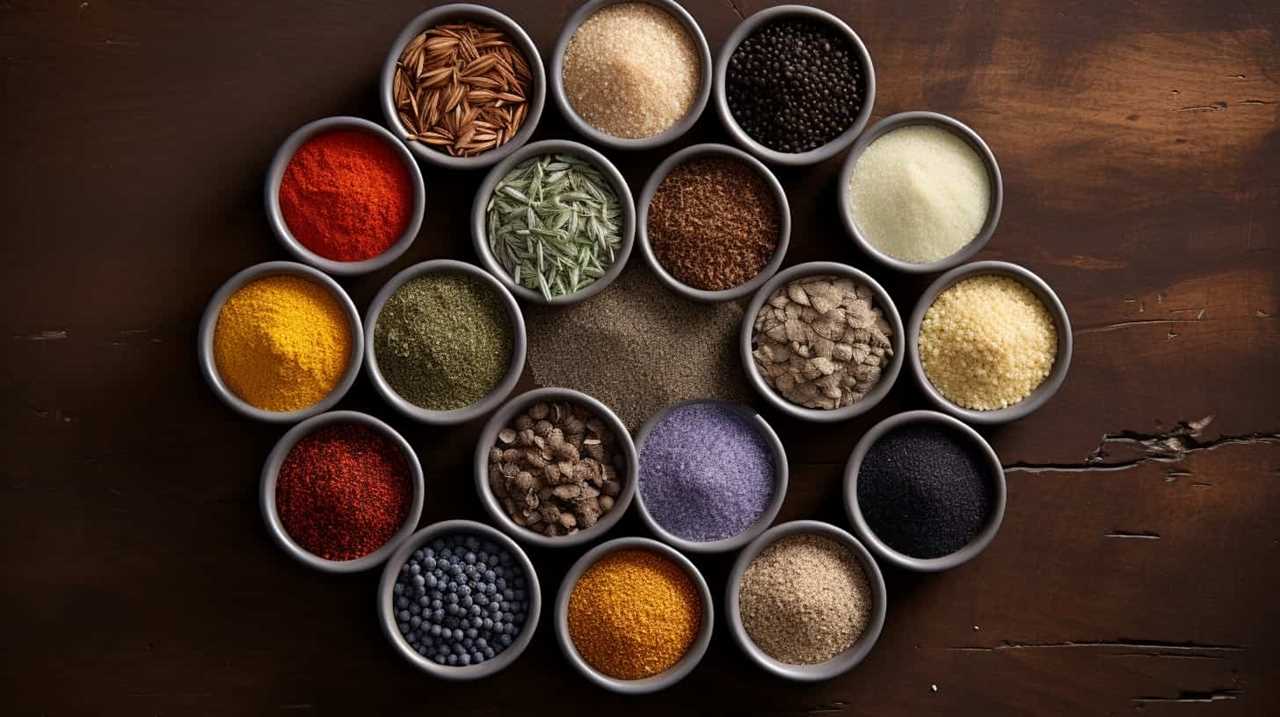
Calculating Production Costs and Profit Margins
To effectively manage our seed farming business, we regularly calculate the production costs and profit margins, ensuring that we make informed decisions for maximizing our profitability. Conducting a thorough production cost analysis allows us to identify areas where we can reduce expenses and improve efficiency. By optimizing our profit margins, we can increase our revenue and achieve financial liberation.
Here are five key reasons why calculating production costs and profit margins is essential for our seed farming business:
- It helps us understand the true cost of producing each seed, enabling us to set competitive prices.
- It allows us to identify any inefficiencies in our operations and make necessary adjustments.
- By analyzing profit margins, we can determine which seeds are most profitable and focus our resources accordingly.
- It enables us to negotiate better deals with suppliers and reduce procurement costs.
- Regularly analyzing production costs and profit margins helps us stay ahead of the competition and adapt to market changes effectively.
Staying Updated With Chia Seed Industry Trends
To stay informed about the latest trends in the chia seed industry, we regularly keep track of market developments and industry updates. By conducting thorough chia seed market analysis and monitoring chia seed consumption trends, we ensure that we are always ahead of the curve.
To give you a glimpse of the current state of the chia seed industry, here is a table showcasing some key trends and statistics:
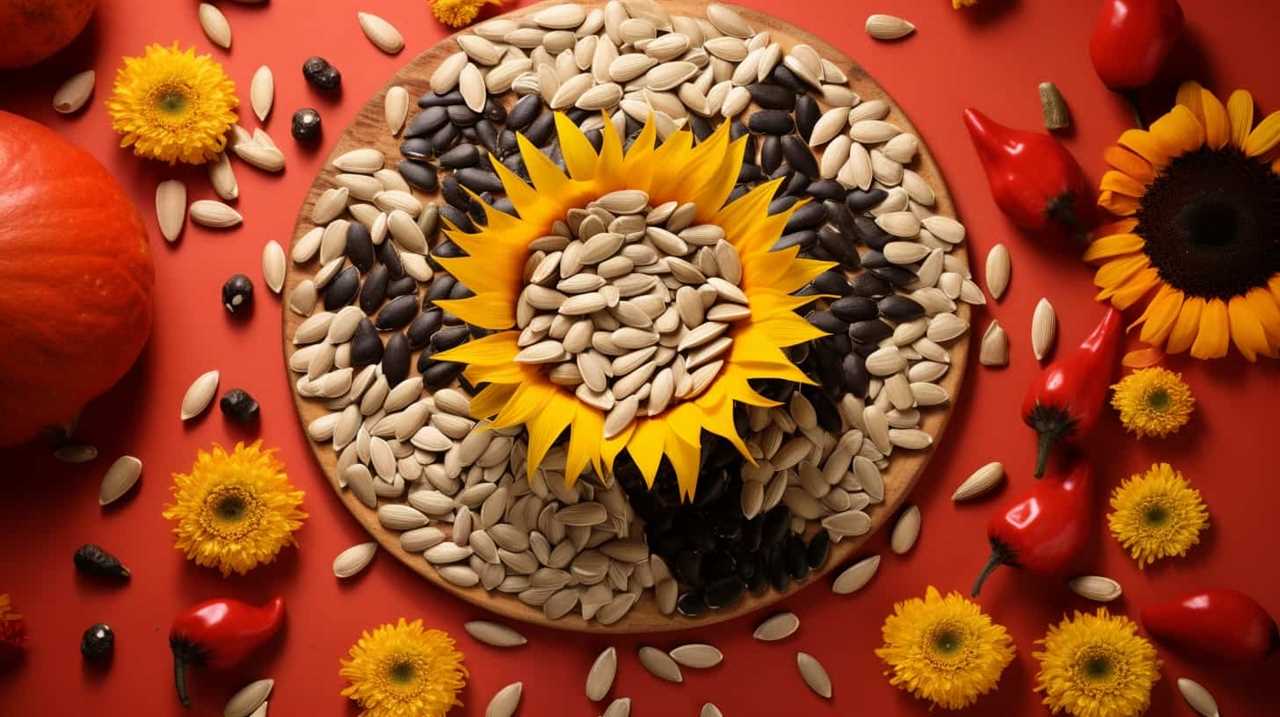
| Trend | Impact |
|---|---|
| Increasing demand | Higher prices and profits |
| Growing health awareness | Expanded market potential |
| Rising popularity in food and beverage industry | Increased product innovation |
These trends indicate a promising future for the chia seed market. As consumers become more health-conscious and seek natural alternatives, the demand for chia seeds continues to rise. This presents an excellent opportunity for commercial seed farming, allowing farmers to capitalize on the growing market and meet the evolving needs of consumers. By staying updated with industry trends, we can adapt our farming practices and strategies to maximize profitability and success in this dynamic market.
Conclusion
In conclusion, commercial seed farming can be a profitable venture if certain key factors are considered.
By selecting the right chia seed varieties and optimizing soil conditions, farmers can enhance crop yield and profitability.
Implementing effective irrigation techniques and managing pests and diseases are crucial for success.
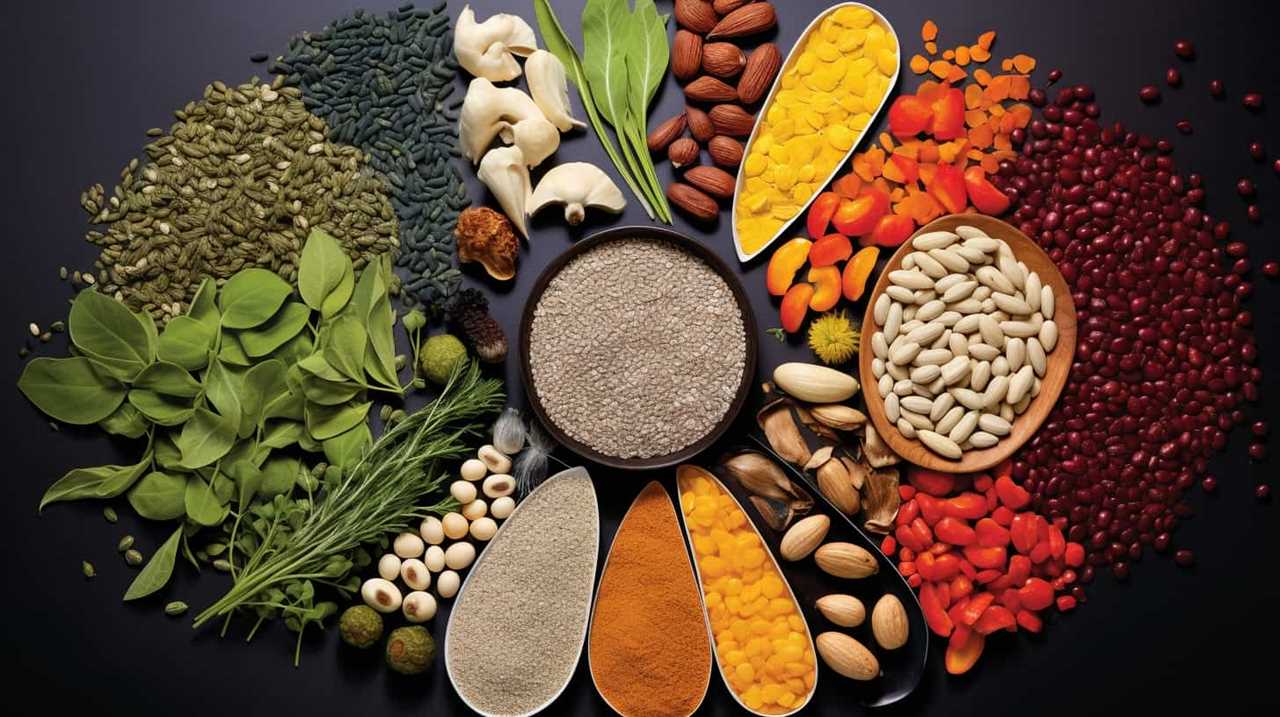
Additionally, developing a marketing strategy and staying updated with industry trends are essential for maximizing sales and staying competitive.
Interestingly, according to recent studies, the global chia seed market is projected to reach a value of $1.5 billion by 2026, highlighting the potential profitability of this industry.
Hi, I’m Sarah. I write for Turtle Tree Seeds, a news blog that loves food – all kinds of food. But especially bacon, chocolate, and veggies. We’re on a mission to show the world that you can enjoy all of those things, even kale and brussels sprouts. Because we believe that when it comes to food, there’s no such thing as guilty pleasures. Just pleasures.
I’m also a huge fan of puns (obviously).
-
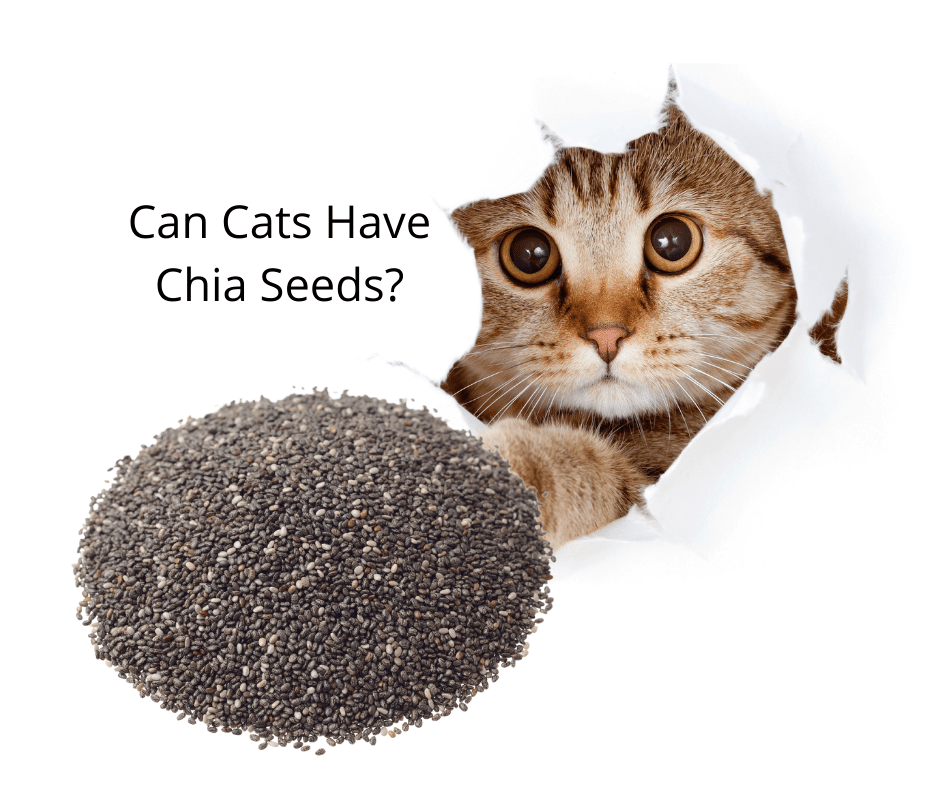
 Chia Seeds3 months ago
Chia Seeds3 months agoCan Cats Have Chia Seeds?
-
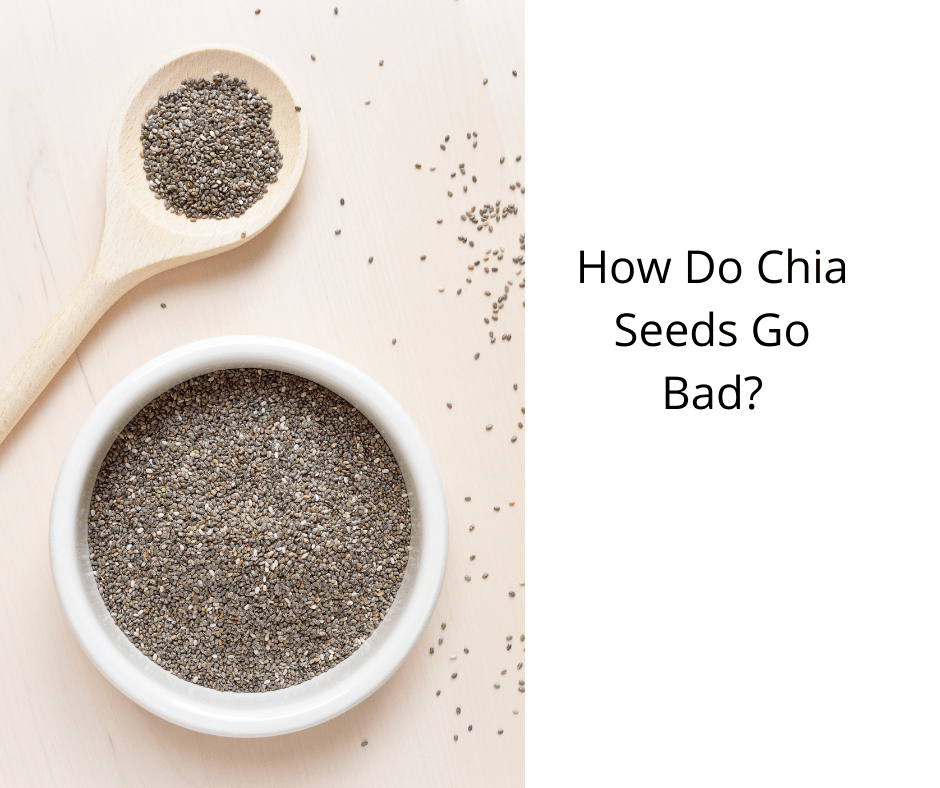
 Chia Seeds3 months ago
Chia Seeds3 months agoHow Do Chia Seeds Go Bad?
-
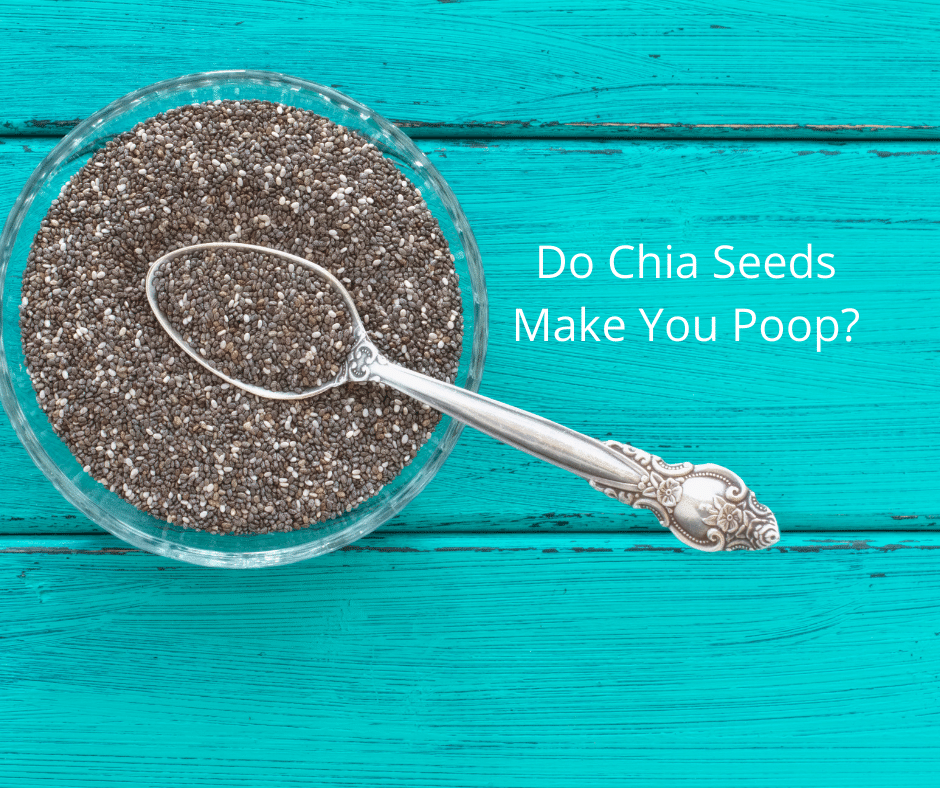
 Chia Seeds3 months ago
Chia Seeds3 months agoDo Chia Seeds Make You Poop?
-

 Health Risks and Allergies Related to Chia Seeds3 months ago
Health Risks and Allergies Related to Chia Seeds3 months agoWhy Do Chia Seeds Gel
-

 Chia Seeds3 months ago
Chia Seeds3 months agoHow to Use Chia Seeds For Weight Loss
-

 Chia Seeds and Digestive Health2 weeks ago
Chia Seeds and Digestive Health2 weeks agoWhy Are Chia Seeds Beneficial For Gut Health?
-
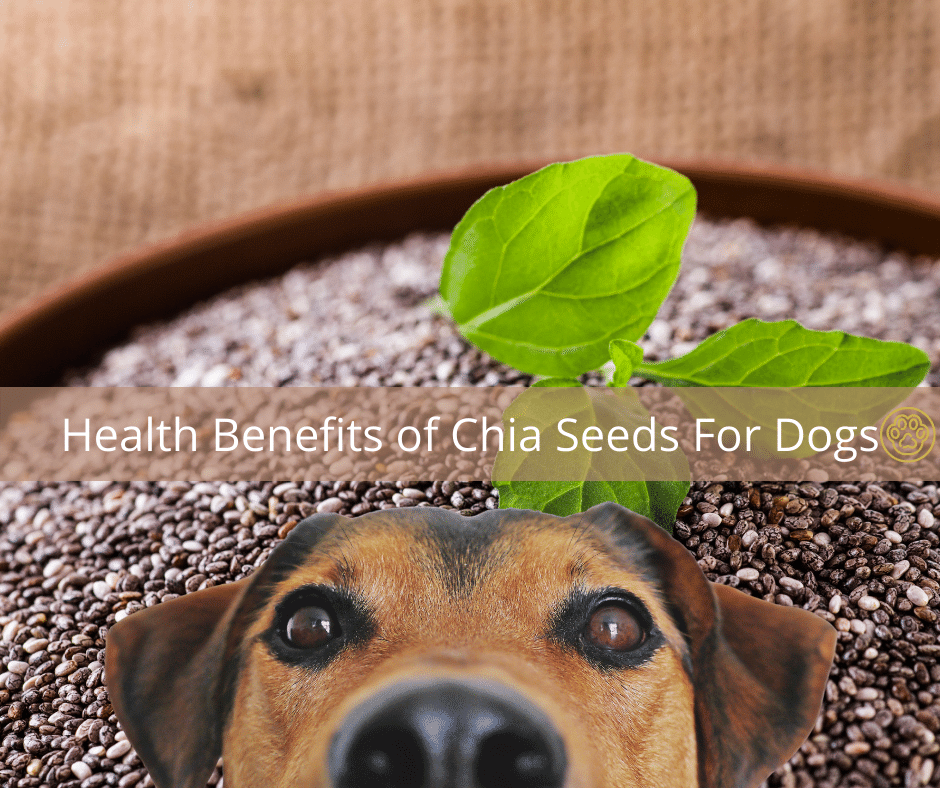
 Chia Seeds3 months ago
Chia Seeds3 months agoHealth Benefits of Chia Seeds For Dogs
-
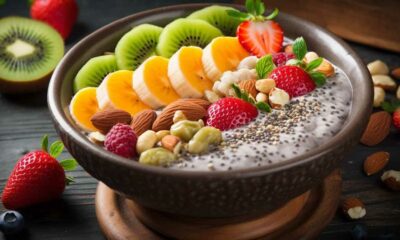
 Chia Seeds in Gluten-Free Diets2 months ago
Chia Seeds in Gluten-Free Diets2 months agoYour Dependable Guide: Chia as a Gluten Substitute




